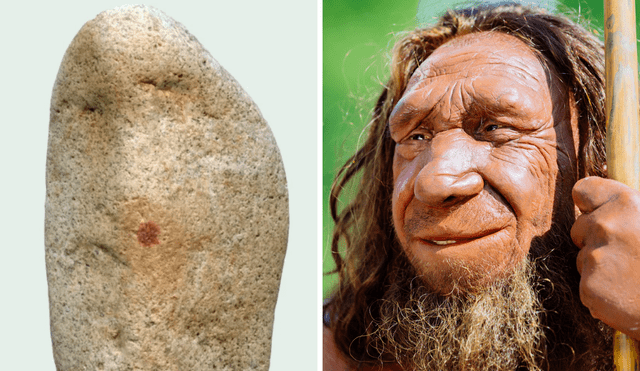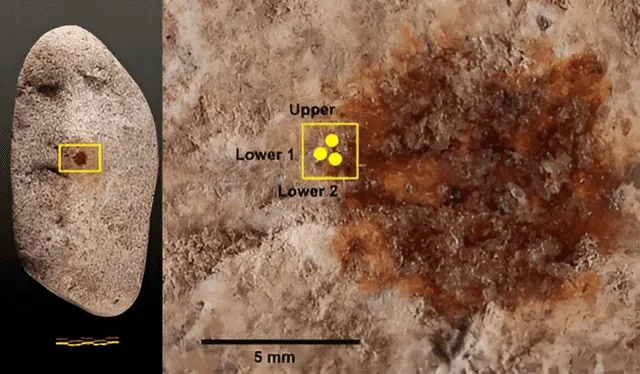Neanderthal art? 43,000-year-old fingerprint on pebble may be earliest human face symbol
A red ochre Neanderthal fingerprint on a 43,000-year-old pebble in Spain may represent one of the oldest human images.

A study released today demonstrates that a pebble of quartz-rich granite, excavated from a rock shelter in central Spain, may be one of the most ancient examples of symbolic art by Neanderthals. The pebble, over 8 inches long and dating back 42,000 to 43,000 years ago, bears natural shapes that resemble a human face — and a single red spot where a nose would be.
Researchers recognized the red stain as ochre, a natural pigment, and forensic analysis demonstrated that it was created by a human finger. This fingerprint, which is believed to be that of an adult male Neanderthal, represents an intentional act of symbolization. The discovery contradicts the prevalent assumption within the field that symbolic or artistic expression arose exclusively with Homo sapiens.

ALSO SEE: Anglo-Saxon bucket buried 1,400 years ago unearthed in England: what contents does it hold?
A singular discovery with symbolic implications
According to the study, printed in Archaeological and Anthropological Sciences, the red dot's location may be pareidolia — the psychological phenomenon of seeing familiar shapes, like faces, in inanimate objects. Researchers propose that the Neanderthal would have recognized the face shape in the pebble and marked it up with ochre, producing a small but meaningful symbolic image.
Lead author David Álvález-Alonso emphasizes that Neanderthals never developed a symbolic visual system as sophisticated as that of modern humans, but this discovery contributes to mounting evidence they did employ symbolic behavior. The discovery also has embedded in it what is arguably the most complete Neanderthal fingerprint ever found, so it is a doubly astonishing discovery.

The canvas simulates the face of a Neanderthal with reliefs on the pebble and a red dot on the nose. Photo: BBC
Isolated artifact adds to broader understanding
Though the pebble is a non-utilitarian object and solitary in its context, it indicates cognitive skills in Neanderthals which were not formerly acknowledged. Álvarez-Alonso cautions against direct comparison with Homo sapiens, but cites that the finding testifies to the potential for a "complex mind" able to abstract and signify.
Neanderthals coexisted with early modern humans for thousands of years before finally becoming extinct around 40,000 years ago. This discovery feeds into a rethinking of their cognitive and cultural capacities, further blurring the line between them and early Homo sapiens in symbolic representation.












